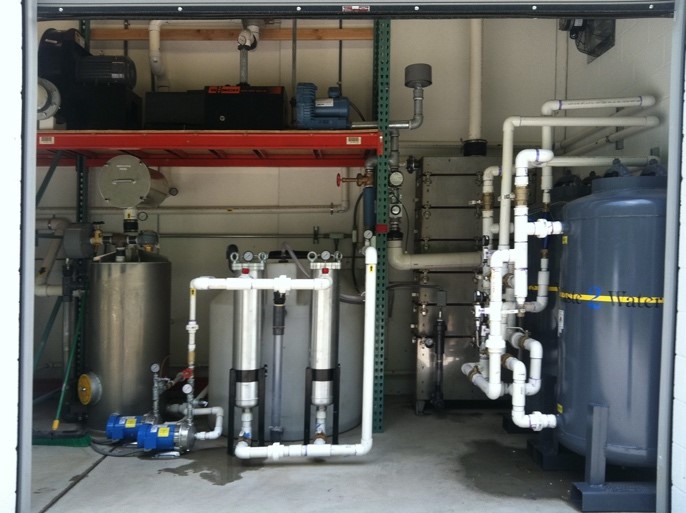Emergency Response Actions at Arctic North Warning System Radar Station
Emergency Response Action, Wastewater Treatment System Design, Construction, Installation, Testing, Optimization and Operation, Maintenance and […]

Weaver Consultants Group’s (WCG) Remediation Services team leads remediation efforts at a former industrial manufacturing facility surrounded by protected wetland areas in Wayne Township, New Jersey. WCG has provided design, installation, testing, optimization and operation, maintenance, and monitoring (OMM) support services associated with both the onsite Multi-Phase High Volume Extraction (MP-HVE) system, on and offsite Sub-Slab Depressurization Systems (SSDS) and the Enhanced Reductive Dechlorination (ERD) remedial strategy. The Site includes legacy contamination from various historical manufacturing operations, including manufacturing of laminated plastics and the assembly, testing, and packaging of explosive detonating devices and fuses by Rexon Technology Corporation (Rexon), impacting the Shallow/Deep Overburden and Upper/Lower Shallow Bedrock Water Bearing Zones (WBZs).
The facility has operated continuously since the 1950s, reportedly using 1,1,1-Trichloroethane (TCA), Trichlorofluoromethane, and Methyl Ethyl Ketone (MEK). Former Site operations also involved cutting, lubricating, and hydraulic oils, as well as paints, paint thinners, and No. 2 fuel oil. Rexon ceased operations at the facility in 1988. In 1989, property owners entered an Administrative Consent Order with NJDEP under the Environmental Cleanup and Responsibility Act (ECRA), which was the predecessor to the Industrial Site Recovery Act. Environmental investigation activities for soil, groundwater, surface water, and indoor air have been completed at the Site since 1988.
WCG performed remedial pilot tests and initiated the design, installation, testing, optimization, and OMM of a multi-phase capture and treatment system beginning in 2014. The MP-HVE system design was developed to remove or minimize total dissolved solids (TDS), total suspended solids (TSS), and spent chlorinated volatile organic compounds (CVOCs), including TCA, Tetrachloroethene (PCE), Trichloroethene (TCE), and associated degradation products to levels in compliance with a New Jersey Pollutant Discharge Elimination System (NJPDES) permit [surface water] and NJDEP air pollution control permit. WCG team members managed the permit application process, negotiated the permit requirements, and required monitoring since 2013.
The MP-HVE system was constructed in 2014 under the guidance of WCG. The treatment system included TSS filtration, multi-media separation, air stripping, activated carbon adsorption, catalytic oxidizer, SSDS, and a programmable logic control (PLC) system, providing remote operation and system alarm notification. In 2018, WCG expanded and optimized the system for increased water treatment efficiency and streamlined maintenance. To address offsite migration of CVOCs, multiple offsite SSDS were installed following a vapor investigation at downgradient residential properties. WCG continues to oversee and manage MP-HVE and SSDS operations and support services to ensure regulatory discharge permit requirements are met. Over the past six years, the system has maintained over 95% “up-time”.
To expedite the cleanup timeline, WCG designed and implemented an in-situ ERD and performance monitoring program in 2019. The ERD program consists of injecting a dilute carbohydrate substrate (1-10% molasses solution) and amendments to optimize the biogeochemical environment to promote further biodegradation of CVOCs. Initial performance monitoring of the ERD program has successfully demonstrated reductions in CVOC parent compounds (PCE, TCE) and distribution of the carbohydrate substrate within the targeted unconsolidated and bedrock WBZs.
Due to the accelerated NJDEP cleanup deadline, the client requested WCG to review, refine, and optimize the remedial program for the most cost-efficient and effective allocation of resources to meet the cleanup requirements. WCG implemented the following actions in support of these efforts: